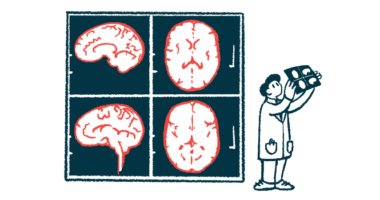Motor function restored in Parkinson’s mice with GT-02287
Gain Therapeutics cleared for Phase 1 clinical trial of healthy adults

A once-daily treatment with GT-02287, an oral medication being developed by Gain Therapeutics, protected nerve cells from damage and rescued motor symptoms in a mouse model of Parkinson’s disease associated with mutations in the GBA gene.
“We believe the data showing complete restoration of motor function in a therapeutic model are remarkable and further support the potential of GT-02287 to slow or stop the progression of Parkinson’s disease,” Matthias Alder, Gain’s CEO, said in a press release.
The company has been cleared to start a Phase 1 clinical trial in Australia to test the therapy’s safety and tolerability in healthy adults. The trial will also evaluate the medication’s pharmacokinetics, or how it moves into, through, and out of the body.
“We are currently conducting a Phase 1 clinical trial of GT-02287 in healthy adults to evaluate its safety, tolerability, and pharmacokinetics, and plan to commence treatment of patients in an extension of that clinical trial in [the third quarter] of this year,” Alder said.
The GBA gene codes for glucocerebrosidase (GCase), an enzyme that helps break down the glucocerebroside molecule into simpler sugars and fats inside lysosomes, the recycling centers of cells. Mutations in GBA are a common genetic cause of Parkinson’s.
When GBA is mutated, GCase becomes less active, which causes deficient lysosomal function. As a result, some proteins, including alpha-synuclein, form toxic clumps. Toxic alpha-synuclein accumulation in the brain is a hallmark of Parkinson’s.
GT-02287 is designed as an allosteric activator of GCase, that is, a small molecule that binds to the enzyme and restores its function, which should prevent alpha-synuclein from building up in nerve cells in the brain.
GT-02287’s effects on nerve cells, motor function
In previous studies in preclinical models of Parkinson’s, GT-02287 improved the health of nerve cells and fine motor skills in mice. It also reduced the levels of neurofilament light chain (NfL) in the blood, a biomarker of neurodegeneration.
Here, researchers at Gain investigated how well GT-02287 protects dopamine-producing nerve cells from damage and whether it can restore motor function when given a few hours or days after Parkinson’s is induced. Dopamine is a chemical involved in motor control and its loss causes Parkinson’s motor symptoms.
The results were presented as a scientific poster, titled “GT-02287, a clinical stage GCase enhancer, displays neuroprotection and restores motor function in preclinical models of Parkinson’s disease following delayed administration,” at this year’s WORLD Symposium, this month in San Diego.
Dopamine-producing nerve cells from rats were grown in the lab and given alpha-synuclein fibrils (small clumps) and an inhibitor of GCase to model Parkinson’s. Sixteen hours later, some cells were left untreated, while others were given GT-02287 at four different doses.
Treatment with GT-02287 protected the dopamine-producing nerve cells from the toxic insult by alpha-synuclein clumping, rescuing their survival both in the presence and absence of the GCase inhibitor. GT-02287 also protected lysosome function.
Researchers also injected alpha-synuclein fibrils in both sides of the brain of a mouse model of Parkinson’s. The animals were given a low dose of the GCase inhibitor every other day for 27 days, or almost a month. Treatment with GT-02287 was started on day four or eight after Parkinson’s was induced.
Compared with untreated Parkinson’s mice, those treated with GT-02287 held onto an elevated wire frame almost six times longer, indicating better motor function, regardless of whether treatment was started on the fourth or eighth day. NfL dropped to near-normal levels.
“GT-02287 rescued locomotor impairment even when treatment began several days after the initial toxic insult. In fact, the longer that GT-02287 was applied, the greater the improvement,” the researchers wrote, noting this suggests continued treatment with GT-02287 may restore motor function over time, even if it’s started after symptoms have manifested. “These new data support the potential of GT-02287 as a disease-modifying therapy for Parkinson’s disease.”







